Damson jam is a little different to most jams out there. It’s loaded not just with sweet flavour, but also a delectable sourness inherent in the skin of the fruit. This small batch damson plum jam is ideal for anybody who likes their fruit preserve with a little edgy flavour to it, especially since it also embraces enticing baking spices.
Have you spotted my recipe for greengage jam? It’s another unsung hero.
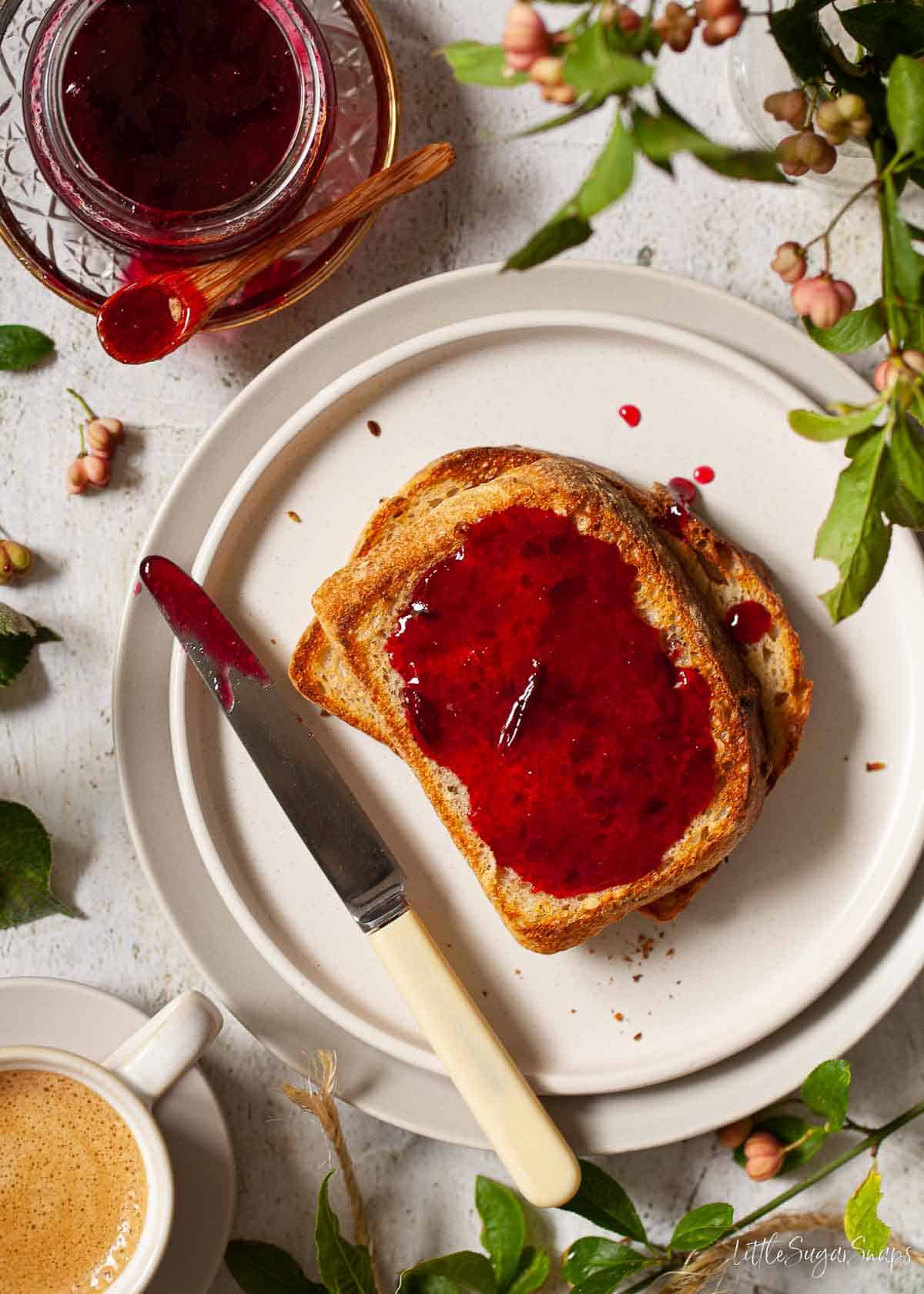
Want to Save This Recipe?
Jump to:
When it comes to jam-making, I’m all for small batch recipes. Today I’m adding this little recipe for spiced damson jam to my list. It makes around 2 jars of tasty, tangy and delightfully different fruit jam.
In all honestly, I find making any jam in large quantities a little overwhelming for my equipment (standard kitchen saucepans). I also just enjoy stocking a jam shelf in my pantry laden with choice so I know that my latest whim can always be met. For these reasons, I always go down the small batch route when it comes to making jams and preserves.
This recipe for damson plum jam makes great use of damsons when they are in season. And since it incorporates some sweet baking spices, it’s a particular favourite of mine to tuck into over the cooler months of the year.
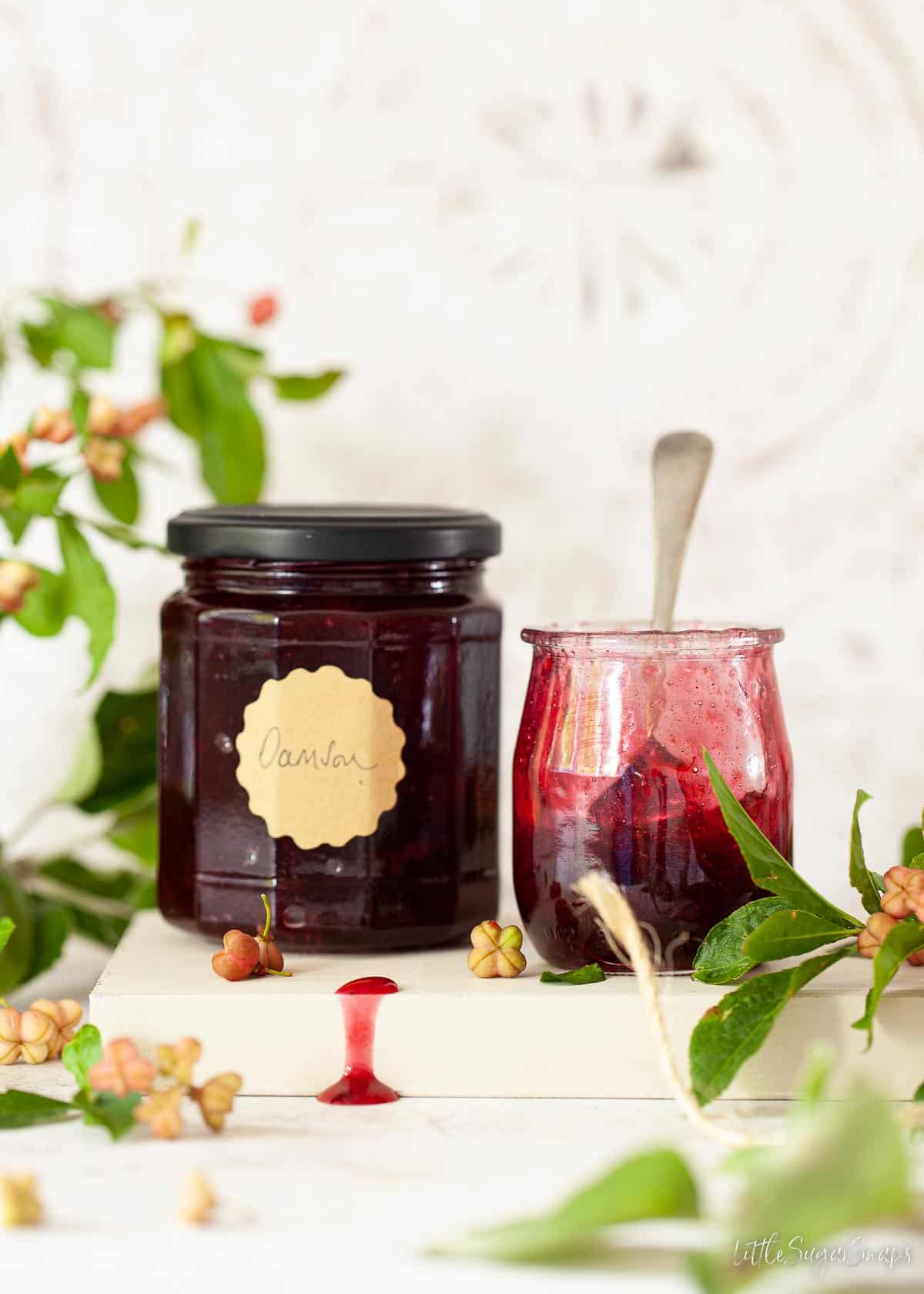
Try my small batch recipes for peach jam, Amaretto cherry jam, lemon curd and passion fruit curd too.
Why you’ll love this damson plum jam
- The flavour is both sweet and sour.
- It possesses a fantastic colour – that’s the effect of those gorgeously dark-skinned damson plums.
- It’s made with standard white sugar, so there’s no need to hunt around for special jam sugar.
- It is also made without pectin as the fruit contains plenty naturally.
- This damson jam is not only vegetarian but also suitable for vegan, gluten-free and dairy-free diets too.
- There are plenty of uses for this decidedly different jam – I’ve listed a handful of ideas towards the end of this post.
- It’s a small batch recipe (making 2x340g jars), so is easy to make and won’t hog too much precious cupboard space (although the recipe can be doubled).
What are damsons
Damsons are small stone fruits with dark, indigo blue skin that is known for being impertinently sour. They are small and ovoid in shape (rather like small eggs) with a smooth flesh that is yellow-green in colour.
Where do damson plums grow?
The damson fruit is a subspecies of plum found across Europe but it is native to Great Britain. The trees can be planted in gardens but often grow wild. I foraged my fruit locally, so the version pictured here is wild damson jam.
When are they in season?
Damson trees flower in April and the fruit grows from this point until late August through to October when it is ripe enough to be harvested.
Don’t pluck the damsons from the tree until their skin is deeply coloured and they feel soft when gently squeezed. If the skin is green or the fruit feels firm leave them growing for a little longer to ripen further.
What do they taste like?
Damsons have a robust flavour that is sweet yet also slightly astringent (or bitter). They are high in sugar but the particularly sharp taste may just make your lips pucker if you eat them raw. It’s the skin that imparts the sourness.
Technically, all varieties of damsons can be eaten raw, but the tartness is generally too much for human palates to find truly enjoyable. That is why this fruit is generally used to the greatest effect when cooked.
Only a few varieties of damson plums, such as Merryweather, are sweet enough to be eaten raw and actually be considered tasty.
How can they be used?
Aside from making jams and preserves, damsons can also be used to make a wicked fruit crumble or some fruit chutney to pair with cheese, sausages and cold cuts of meat.
For a boozy treat try your hand at making some damson gin liqueur. It makes a lovely gift for loved ones.
Ingredients notes
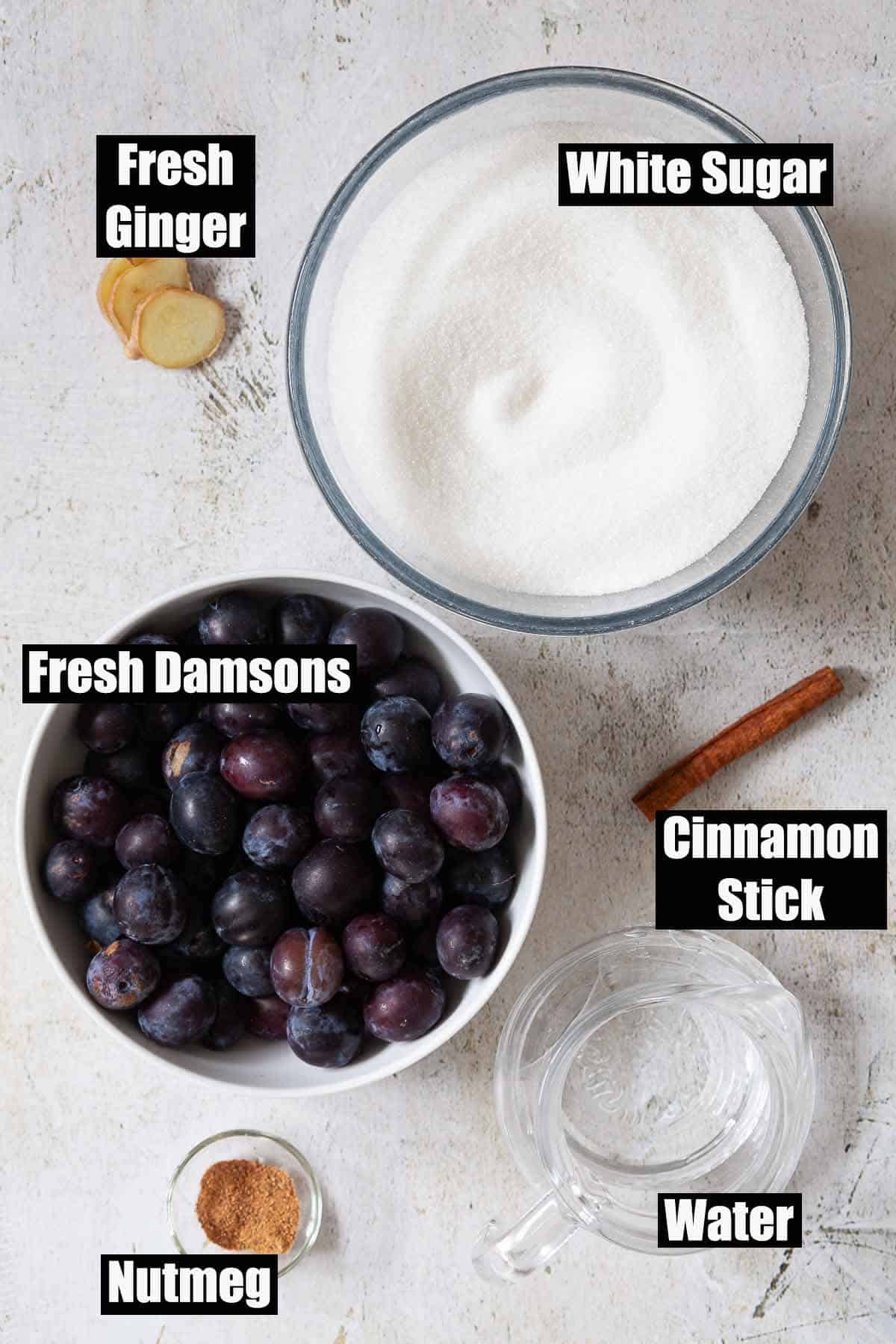
Damsons: only damsons will do for this recipe which has been developed specifically with the twanging tartness of those tiny British plums in mind. Do not substitute normal plums for them as the jam could potentially end up being much too sweet.
Damsons also contain a high amount of pectin so there is no need to add in pectin or lemon juice to help achieve a good set.
Sugar: Either white granulated or white caster sugar is ideal for this damson preserve recipe. Do not use jam sugar as this contains added pectin, which is not necessary for this recipe.
Spices: I’ve included a mix of cinnamon, nutmeg and ginger. These are all optional or interchangeable depending on your requirements.
Equipment notes
Large saucepan: Use a very large pan to make your damson jam. The larger the surface of the pan, the easier it is to bring the ingredients to a rolling boil and allow the ingredients to cook evenly.
Digital food thermometer: the easiest way to tell when jam has reached its setting point (105C/ 221F) is to use a digital food thermometer. I highly recommend a Thermapen – I make no secret of the fact that this is my favourite kitchen gadget (I use mine all the time).
Step by step instructions
- Roughly chop each damson in half and add to a large saucepan. Don’t worry about removing the stones for now.
- Add in 125ml water and cook for around 10 minutes until the stones have fallen away from the flesh of the fruit.
- Remove the stones using a metal spoon.
- Rub the stones in a sieve to extract any lingering flesh. Discard the stones but add the flesh back into the pan.
- Add the sugar and spices then cook gently for 10 minutes to dissolve the sugar.
- Remove from the heat and let the fruit and spices infuse for 1 hour, then take the spices out of the pan and discard them.
- Return the pan to the heat. Bring to a rolling boil and cook until the temperature reaches the jam setting point of 105 degrees Celsius (221 degrees Fahrenheit) on a digital food thermometer such as a Thermapen.
- Let cool for 10 minutes then decant into sterilised jars.
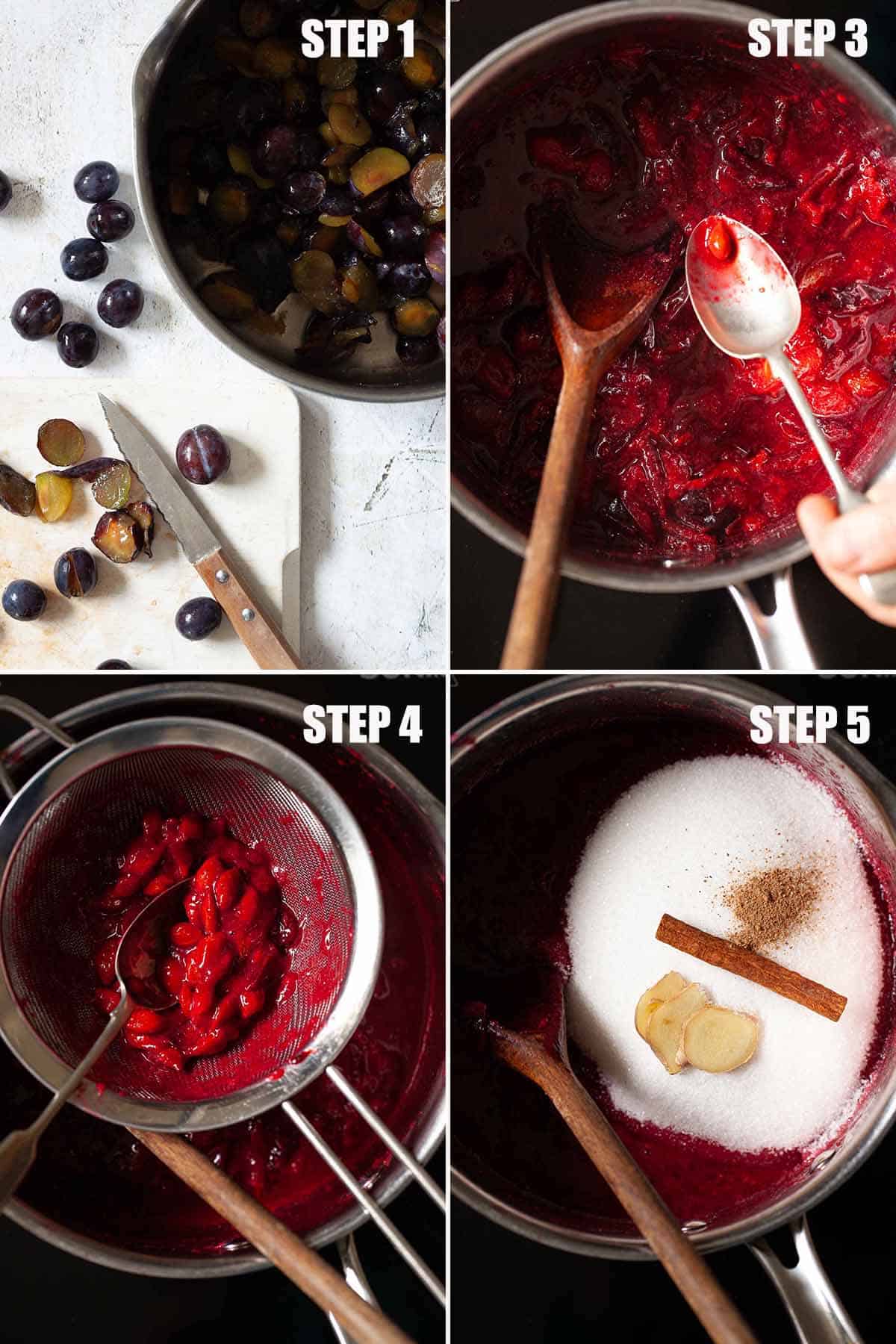
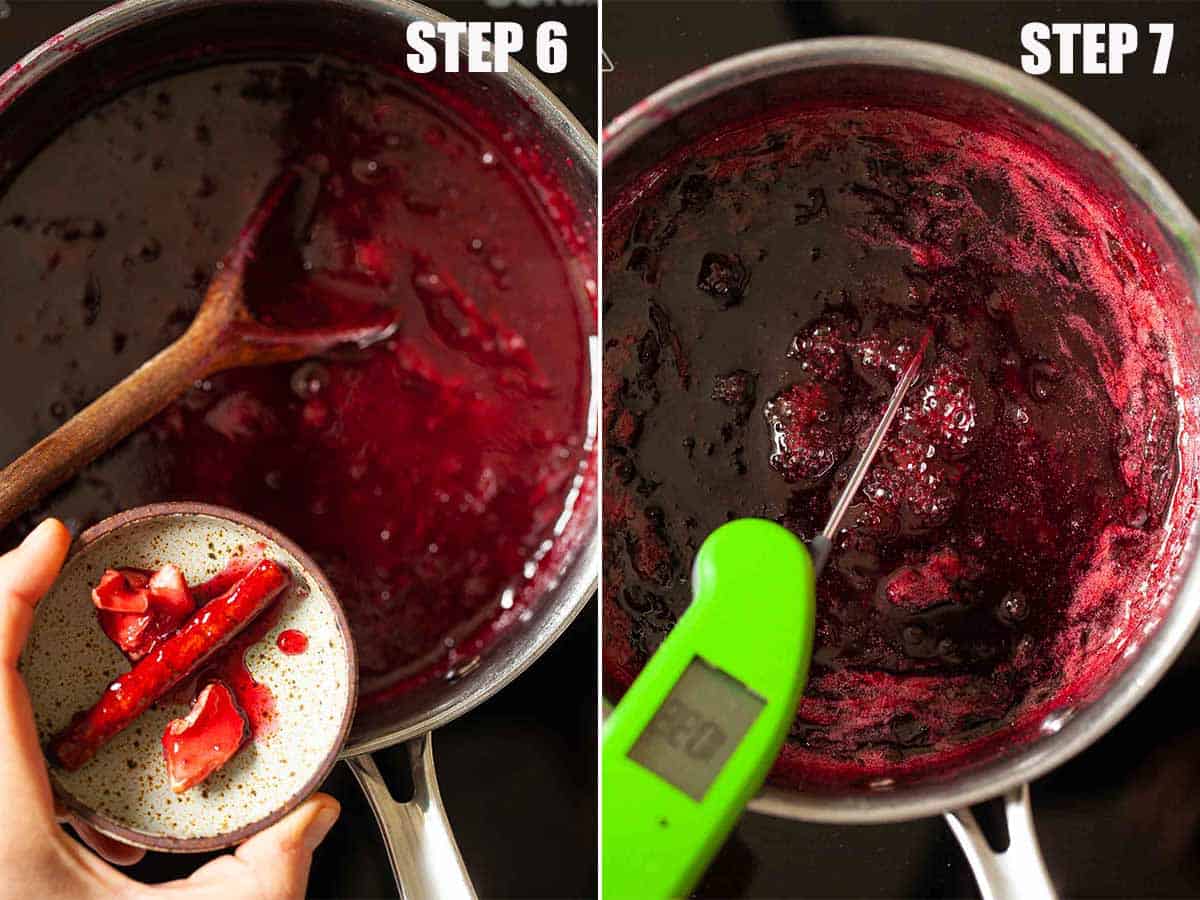
Expert tips
Top tip: Do not peel the damsons – the skin adds a unique flavour and tremendous colour to this spiced damson jam.
- Take your time when removing the stones from the part-cooked jam to ensure you don’t leave any behind. Some people even count the fruits they add to the pot so they can also count the stones back out.
- Even if you think you have removed all of the stones, it’s a good idea to warn people that there may be a stray stone hiding within the jam, just to help avoid an incident.
- Do ensure that your jam is cooked to the right temperature. If it is not cooked to the setting point it will not set. However, jam that is cooked well beyond the set point will turn out too thick to spread.
- If you do not have a food thermometer it is still possible to check that the setting point of the damson preserve has been reached. Put a small saucer into the freezer at the start of the cooking process. When you think that the jam is sufficiently cooked spoon a small amount of it onto the plate. Count to 15 then push it with a finger. It should wrinkle and take time to spread back out over the plate. If it just runs around the plate it needs to be cooked for a little longer and tested again.
- If you intend to store your damson plum jam for longer than a few weeks don’t forget to sterilise the empty jars whilst the jam is cooking.
Alternative techniques for damson stone removal
Most damsons are of the clingstone variety. As the name implies, this simply means that the flesh clings on tightly to the stone. Whilst this characteristic lends itself to an apt and fun name, it does mean that cooks face a challenge when trying to separate the flesh of the fruit from the stone.
If the notion of picking out the stones part way through the cooking process is beyond the pale for you, consider these alternative techniques when making your damson plum jam:
- Use a cherry pitter.
- Squeeze them (the fruit has to be very ripe for this to work).
- Chop the fruit up and away from the stone (expect waste).
Frequently asked questions
The most likely reason that your jam did not set is because it was not cooked to a high enough temperature. The good news is that it can be returned to a saucepan and cooked again, until the setting point is reached.
This damson plum jam can be stored in the fridge for up to 3 weeks. Just pull it out an hour before using it to take the chill off of it as this will enable the flavours to really shine.
If you would like to store your plum jam for longer than 3 weeks it must be decanted into sterilised jars and sealed immediately. It can keep for several years in this instance.
Fancy a sweeter jam? Try increasing the sugar to 600g.
Ways to use damson jam
- Use it to fill a vanilla sponge cake.
- Spoon it over Greek yoghurt.
- Pair with scones and clotted cream.
- Damson preserve makes a great centre for cornflake slices.
- And it makes for a temptingly tart and tangy base layer in a Buxton pudding or a coconut tart. Just add custard for the ultimate treat.
- Or use it to make a comforting steamed sponge pudding.
- Go classic and simple by slathering it on toast, muffins, pikelets or crumpets.
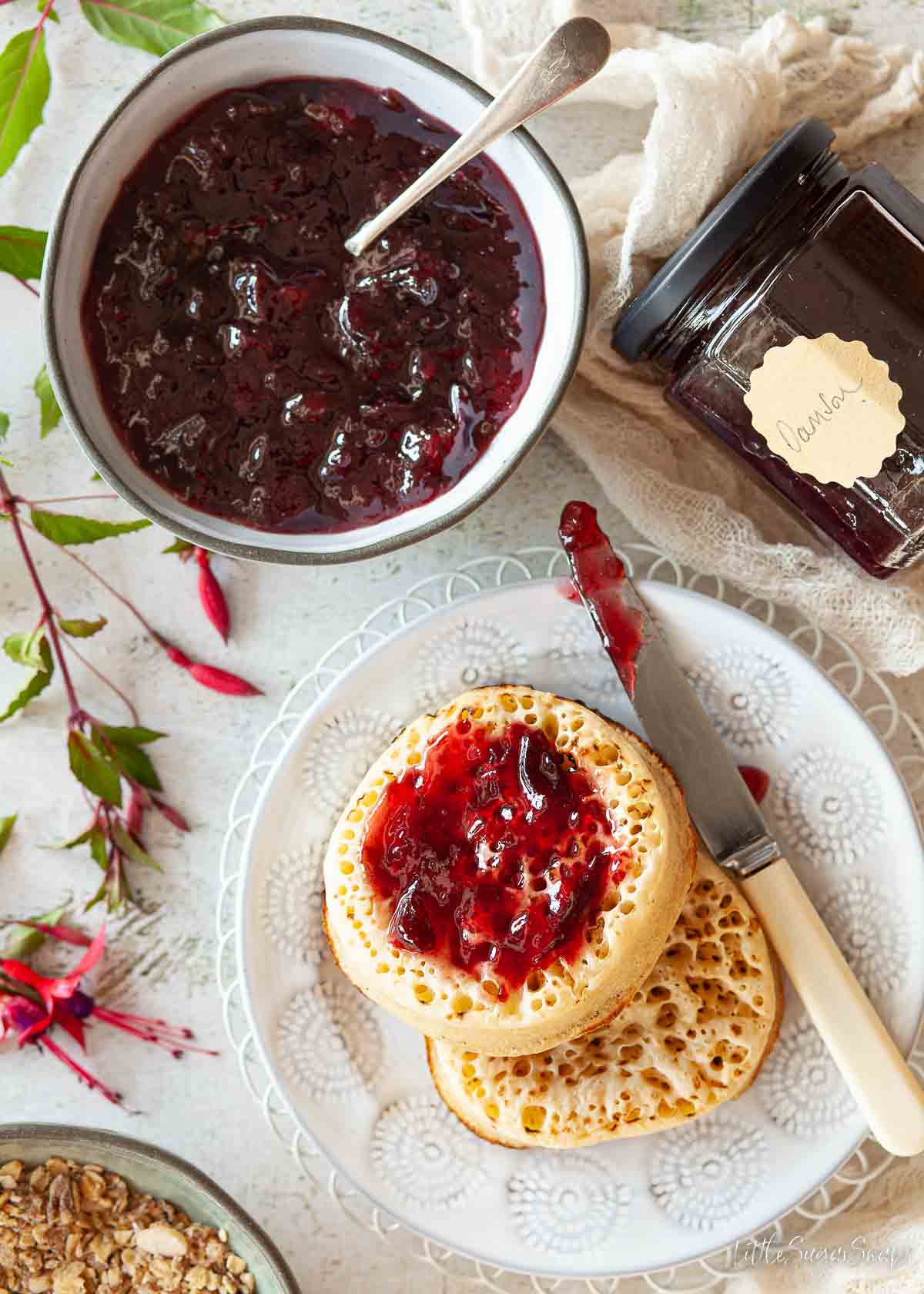
Variations
- Omit the spices to make a classic damson plum jam.
- Replace the spices with a vanilla pod (split open) to impart sweet floral notes into the jam. Once the jam has cooked remove the pod and scrape the seeds back into the jam before decanting into jars.
- Add a splash of port to create a boozy port and damson jam. Just stir in 1½ tablespoons of port once the jam has fully cooked.
- Double (or triple) the batch to make more.
- Vary the spices. Add in some star anise, cloves or some allspice. This wild damson jam can handle all the cosy autumn spices.
More ways to transform fruit
Have you made my small batch recipe for damson jam? If you have made it, please would you leave a comment and/ or rating below to let me know how you got along?
Stay in touch: sign up to receive LittleSugarSnaps newsletters to hear when new recipes are published. Or follow me on social media:
📖 Recipe
Want to Save This Recipe?
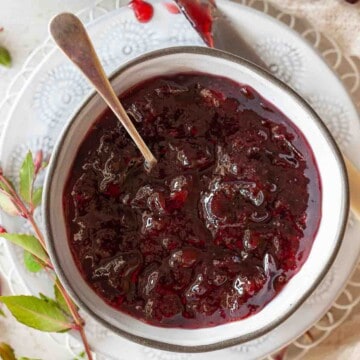
Damson Jam
Equipment
- 1 Large saucepan with a heavy base
- Digital food thermometer e.g Thermapen
Ingredients
- 500 g Damsons
- 500 g White sugar Granulated or Caster
- 125 mml Water
- 1 Cinnamon stick 10cm
- 5 g Fresh ginger (3 x 1mm thick slices)
- ¼ teaspoon Ground nutmeg
Instructions
- Roughly chop each damson in half and add to a large saucepan. Don’t worry about removing the stones for now.
- Add in 125ml water and cook for around 10 minutes until the fruit softens enough for the stones to fall away from the flesh of the fruit.
- Remove the stones using a metal spoon.
- Rub the stones in a sieve to extract any lingering flesh. Discard the stones but add the flesh back into the pan.
- Add the sugar and spices then cook gently for 10 minutes to dissolve the sugar.
- Turn the heat off and let the fruit and spices infuse for 1 hour, then take the spices out of the pan and discard them.
- (Optional) start sterilising your jars when there are 15 minutes of the infusion time left.
- Return the pan to the heat. Bring to a rolling boil and cook until the temperature reaches the jam setting point of 105 degrees Celsius (221 degrees Fahrenheit) on a digital food thermometer such as a Thermapen.
- Let cool for 10 minutes then decant into sterilised jars.
Notes
- Do not peel the damsons – the skin adds a unique flavour and tremendous colour to this spiced damson jam.
- Take your time when removing the stones from the part-cooked jam to ensure you don’t leave any behind. Some people even count the fruits they add to the pot so they can also count the stones back out.
- Even if you think you have removed all the stones, it’s a good idea to warn people that there may be a stray stone hiding within the jam, just to help avoid an incident.
- Do ensure that your jam is cooked to the right temperature. If it is not cooked to the setting point it will not set. However, jam that is cooked well beyond the set point will turn out too thick to spread.
- If you do not have a food thermometer it is still possible to check that the setting point of the damson preserve has been reached. Put a small saucer into the freezer at the start of the cooking process. When you think that the jam is sufficiently cooked spoon a small amount of it onto the plate. Count to 15 then push it with a finger. It should wrinkle and take time to spread back out over the plate. If it just runs around the plate it needs to be cooked for a little longer and tested again.
- If you intend to store your damson plum jam for longer than a few weeks don’t forget to sterilise the empty jars whilst the jam is cooking.


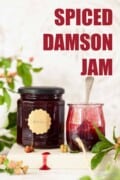

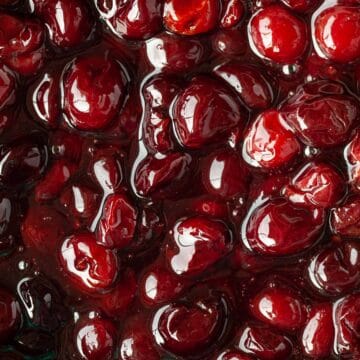
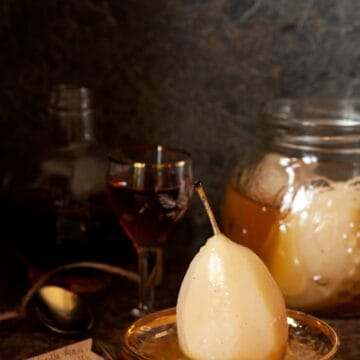
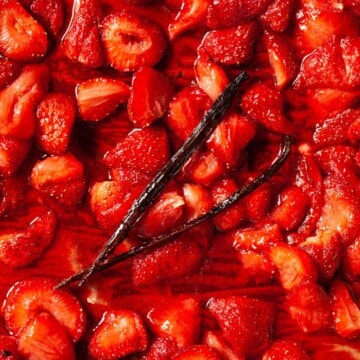
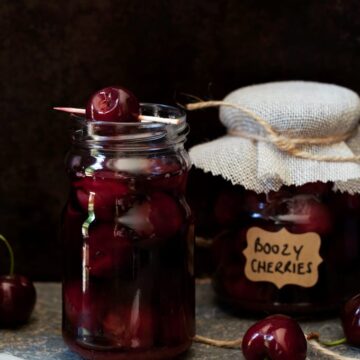
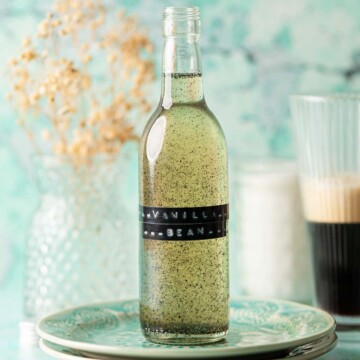
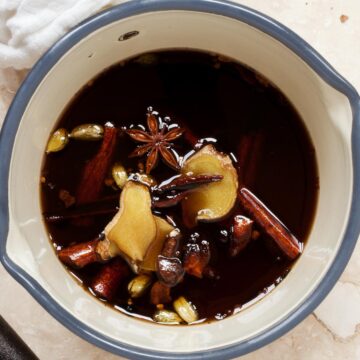
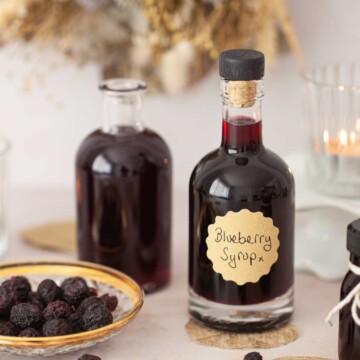
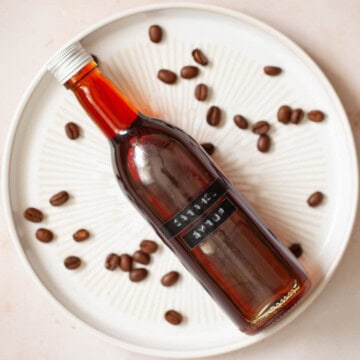
Angela
Do you know if this can be canned using a water bath?
Jane Coupland
Hi Angela,I think this is an American technique (??) and, as I’m British, it’s not one I’m familiar with, but from what I’ve read online over the years, if this is how you usually bottle your jam then I don’t see why you can’t use this technique for my damson jam. I hope that you enjoy the jam.